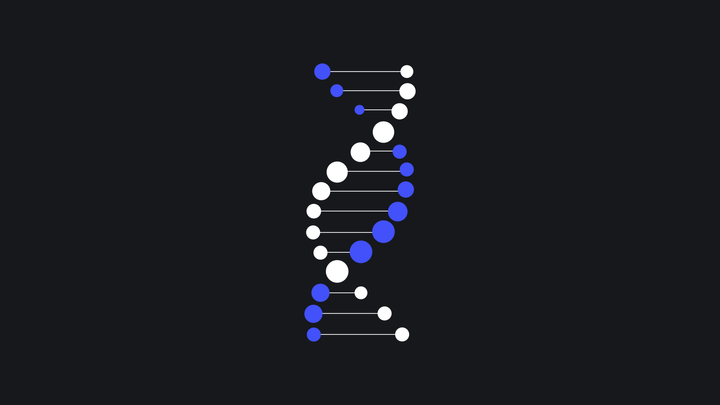In this article, I will show you how I built a system for exploring and improving my health in Tana with heavy AI usage.
I have been experimenting with it for quite some time.
But only with access to GPT-4 API (I got it only a few weeks ago), I was able to utilize the full power of Tana AI for Builders.
This text is a bit technical, but I guess It's the only way here.
If you want to try my system → I will share the Tana Template with the whole workspace at the end of the article.
Let's go!
When dealing with complex multidisciplinary areas such as health, geopolitics, economy (and many others), simply taking notes on what you learn is not sufficient.
We need to build a general framework, a broad understanding system that matches our approach to knowledge acquisition.
And we live in a time when tech is catching up with this need.
Today we have:
- a human-level AI (GPT-4, Clude) that is basically an advanced reasoning machine.
- state-of-the-art knowledge system (Tana), which allows us to structure and understand the world around us.
Together they can give you superhuman cognitive powers!
Experiment
GOAL: To build a system for exploring and improving my health
KEY FUNCTIONS:
- track my condition and progress
- apply a general health framework
- plan the projects related to health
- structure all my knowledge on the subject
STACK: Tana + AI for Builders + GPT-4
AI for Builders is basically an engine & interface inside Tana that allows you to:
- Run GPT-4 using the information from Tana as input
- Design custom prompts that utilize Tana functionality
- Get structured output from the model
I'd say Tana today is the most powerful AI environment for knowledge management and augmented thinking.
Now I'll show you the exact usecases.
1. Break down health into components
Health is a very complex phenomenon.
So I want to:
- Break it into components
- Evaluate each component
- Select the ones that are most relevant to me.
- Set up priorities.
I use a custom BREAK DOWN command to do so (you can install the template a see how all the commands work).
2. Learn more about elements
Now I want to know which role each element plays in the comƒponent.
For example, what is the role/importance of Flexibility training for overall fitness?
I created an AI-enhanced field Role in the #element supertag to get this information easily.
GPT runs the custom prompt with 2 parameters:
Now I can run this prompt on any individual component or on all of them getting information nicely structured.
3. Utilizing the scaffolding
This is already pretty useful.
I can see my health elements at a glance I can evaluate the most problematic of them I can run sprints focusing on things with lower scores.
But obviously, to do so, I need to be well-educated on the subject.
4. Learning new things
I read a lot of health related books and articles and listen to several podcasts.
I use the health framework as a structure to store and evaluate my knowledge.
Here is an example: I’m reading a book called A Hunter-Gatherer’s Guide to the 21st Century. I spotted an interesting idea there related to health.
The key point of this piece of text: A holistic approach to food is more beneficial than a reductionist approach.
I saved the whole chunk of text to Readwise, and exported it to Tana.
Now I will use the power of my #slice supertag to quickly make sense of this piece of information and process it.
5. Transforming the bulk of text
Let’s start with a node’s name. The Brief field will automatically summarize this text into a clear few words summary. The node will automatically take a name from this field.
This is one of my favorite features of Tana. It allows me to keep information scannable, searchable and easily navigate the workspace.
Next, let’s do a nice bullet-point summary (since it’s harder to process bulks of text like this one).
With a simple custom prompt, Tana transforms text into a nice structured form which is way easier to process.
6. Questions
When I stumble upon a new interesting idea, I usually want to take some time to reflect on it.
Here’s how AI can help me: I will ask GPT to give me thought-provocative questions about the text.
I have a special command for that.
In Tana, commands can be attached to specific nodes as a button. But they are always available for basically any node through the Cmd+K menu.
After running the command, I get a list of questions tagged with #question supertag. Some of the questions are so good that I might use them in different contexts/projects.
I can always find them using a live query.
7. Putting knowledge into the framework
After I process this slice of text, I want to connect it to the relevant elements of my health framework.
With the Related elements AI-field, I can automatically extract them from the slice. Prompt will only use elements selected from the list of #elements
In Tana, I can create custom dynamic prompts using live queries. So basically, I query all the nodes tagged #element from my workspace INSIDE(!) the prompt.
I can also make it conditional: I use checkboxes to select elements that I approve as topics.
That's a Wrap!
If you want to try all these things yourself, here you can install the template into your Tana.
https://app.tana.inc/?bundle=pC1SyeLcP3.9XtEFrTQd0K5
I'm constantly improving the system.
Now I'm working on:
- Debate generator (to get a better perspective on complex issues)
- Expert panel evaluation/feedback
- Arguments evaluation and debiasing
The possibilities of Tana AI for Builders are mindblowing!
We can use this type of environment to learn, reflect, analyze and make sense of all kinds of topics.
Andy Matuschak's & Michael Nielsen's vision for Tools For Thought is almost here:
A context in which the user can have new kinds of thought, thoughts that were formerly impossible for them
Thank you for reading!
And see you in the next issue🛰️

